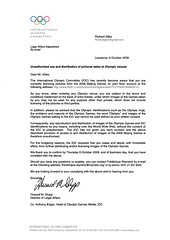Today it’s the Free Culture Workshop at the Berkman Center (@ Harvard) in Boston and I was going to be there. Unfortunately I missed the whole thing because I had to attend a funeral in Stockholm instead. Check out the event. Here is a short position I was asked to write for the workshop, since I will not be using it I will post in here:
Social advances (albeit unequally distributed) have granted people the leisure time to focus on the production of non-essential products and services. Advances in technology have radically reduced the costs for preserving and communicating these cultural artifacts beyond the boundaries of time and space. However it was not until the last 150 years where we have seen the technical and social advances necessary to enable widespread dispersion of the tools of cultural creation and communication to a wider group of users – the amateurs.
The oldest of these technologies is the art of reading and writing which challenged the status of memory. Plato was aware of the conflict and wrote about the art of writing in Phaedrus:
“…for this discovery of yours [writing] will create forgetfulness in the learners’ souls, because they will not use their memories; they will trust to the external written characters and not remember of themselves. The specific which you have discovered is an aid not to memory, but to reminiscence, and you give your disciples not truth, but only the semblance of truth; they will be hearers of many things and will have learned nothing; they will appear to be omniscient and will generally know nothing; they will be tiresome company, having the show of wisdom without the reality.”
This criticism tends to repeat itself with each new technology that redresses the shift of power among those who create culture and those who create culture with the aid of new technology. Arguments similar to those presented by Plato were used in the discussions of the relationships between photography and copyright. Mediating culture with technology brings about discussions on which of the forms of culture are more valuable and deserve protection.
In USA, after Congress amended the Copyright Act to include photography in 1865 the case of Burrow-Giles Lithographic Co. v. Sarony[1] discussed whether the photographer Sarony could have sole rights to his portrait of Oscar Wilde. The United States Supreme Court ruled that photographs could be “representatives of original intellectual conceptions of an author.” While in the UK the courts stated in the Graves’ Case, (1869)[2] that it was “…difficult to say what can be meant by an original photograph. All photographs are copies of some object.”
From these illustrations it is my intention to show that the discussions of culture, technology, value and protection are under constant discussion and movement and therefore are neither fixed nor moving in a linear development from one stage to the next. With the widespread dissemination of a cheap and simple (both terms to be take relatively) technology of digitalization coupled with an open communications infrastructure further barriers to amateur production of culture were removed.
This leads us up until today when the hurdles facing the individual wishing to become a cultural producer are no longer issues of time, economy or technical know-how. What are left are the two major barriers of creativity and copyright. Since it is beyond my ability to discuss the creativity of others I shall limit myself to developing what is meant by the limiting factor of copyright on the creativity of individuals by presenting the three main copyright related hurdles to free culture. The three hurdles are FUD, DRM & copyfraud. The common factor for these three hurdles is that they prevent the free use of cultural material in the development of new cultural artifacts and since our common cultural heritage provides the “raw material” in cultural production the means to develop new material is seriously curtailed.
Fear Uncertainty & Doubt (FUD)
The complexities of copyright have created a great deal of uncertainty among those actors attempting to create cultural artifacts while remaining within the limits of the law. The results of FUD favor inactivity since the perceived risks of violating copyright are seen as too great to risk. FUD is an important factor in different situations, for example: (1) where the creator intends to expose his/her product in a more formal setting e.g. a young film maker may easily add music or images to his/her film without permission but this will limit his/her ability to display the works to the public. (2) Orphaned works i.e. when the author of a work has been “lost” it becomes impossible to ask permission to reproduce and valuable cultural information is lost to the world. (3) The ability of museum and archives to reproduce or present their material to the world. At present the conflict between the National Gallery and Wikipedia provides an excellent illustration of this point.[3] The latter is a great source of concern to many public cultural heritage institutions.
Digital Restrictions Management (DRM)
In an attempt to ensure control over intellectual property many organizations and individuals are implementing digital protection measures. The goal of these measures is to ensure that the copying and spreading of copyrightable material is prevented. However these digital measures tend to create rights for the owners that often go beyond the fair use rights of those attempting to consume the cultural artifacts. In addition to this, legislation intended to prevent users from circumventing digital protection measures have been enacted in most jurisdictions. The effect of such legislation is to make moot whether or not the user has fair use rights under copyright since he/she is illegally circumventing a digital protection measure.
Copyfraud
The general state of confusion surrounding the extent of protection granted by copyright is being used (intentionally and unintentionally) to claim copyright over material which either may not be copyrightable or material for which the period of copyright protection has passed. These illegitimate limitations to the public domain may of course be contested in court but such actions are costly, entail an element of risk and favor the party with better lawyers. Therefore material, which under copyright legislation is available to all, is prevented from becoming part of our common cultural raw material that may be freely used.
[1] l l lU.S. 58 (1884).
[2] 4 L.R.Q.B. 715, 722
[3] BBC News “Wikipedia Painting Row Escalates” http://news.bbc.co.uk/2/hi/technology/8156268.stm?lsf



